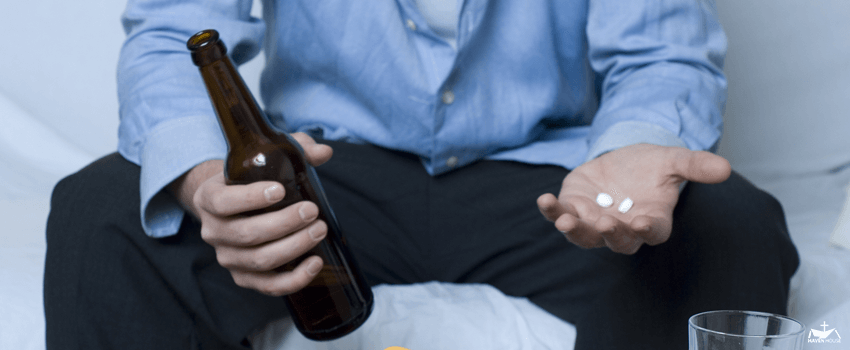

One of the most prevalent mental diseases in the US, addiction affects millions daily. According to the Drug Addiction and Mental Health Services Administration, 21 million Americans aged 12 or older received treatment for becoming addicted to drugs and alcohol in 2016.
Addiction includes a dependency on alcohol, opioids, and nicotine, among many other drugs. The National Institute on Drug Abuse describes addiction as “a chronic, relapsing brain disorder defined by persistent drug seeking and use, despite adverse consequences.”
Addiction may impact a person’s relationships, financial stability, and health. In the worst-case scenarios, it results in death. According to the Centers for Disease Control and Prevention, overdose deaths caused by drugs reached an all-time high of over 50,000 persons in the United States in 2015. The increasing opioid crisis, which is ravaging communities nationally, is primarily to blame for this rise.
Signs of Addiction
It’s crucial to understand the phases and cycle of addiction so that family, friends, and medical experts can take action. Individual differences in susceptibility to addiction result from a combination of environmental and genetic variables, such as mental health, a family history of addiction, or social milieu.
According to the National Council on Alcoholism and Drug Dependence, specific characteristics are displayed by people when addiction takes hold.
These consist of:
- A decline in control
- Giving up interests and activities
- Inadequate performance at job or school
- Unaccounted-for financial issues
Recognizing The 5 Stages of Addiction
There are several causes of addiction to drugs and alcohol. Still, regardless of the underlying causes, chemical dependence manifests in different ways depending on the substance being abused and how each individual responds to the chemical. Every drug or alcohol would have an impact on the body that would be physical, emotional, and physical.
Every person who takes a material usually doesn’t become reliant on it immediately. Although each individual and situation is unique, most people with drug use disorders experience one or more of the five stages of addiction.
Stage One: A Routine
A substance pattern or routine that is starting to exhibit is one of the early indicators of budding drug dependence. Heroin is an addictive drug; thus, using it for the first time might motivate someone to use it frequently. Due to the intense emotions of exhilaration they experience, a patient who has been prescribed a legal substance may increase their dosage. Soon, one starts to show signs of consistent drug usage. With a substance like oxycodone, a person may get track marks on their arms, bloodshot eyes, significant weight loss, and unquestionably begin abusing higher medication dosages.
Stage Two: Careless Use And Risky Behavior
Some individuals with substance use problems may mix different substances, such as cocaine or meth, for a more potent high. This results in reckless usage, the second indication of addiction. When a person takes many drugs—a practice known as polydrug use—they significantly increase their chance of suffering a deadly overdose. One toxic substance, let alone numerous risky compounds at once, can affect the body in ways that are not intended. However, risky drug use is not limited to polydrug usage. It may include careless actions paired with regular drug usage. Examples of the results of a pattern of drug misuse with an activity that affects others include people drinking and driving.
Stage Three: Tolerance
People who abuse dangerous drugs may become aware of their elevated tolerance levels due to continuous use. People can discover that they crave more of the substance or try substances with comparable effects. A person’s tolerance level can have a significant emotional and physical impact, since substance misuse has changed people’s brains. They might not be able to spend a day without the drug at this stage, which gradually increases their urge to use it.
Stage Four: Dependence
Dependence is the fourth stage of addiction. Individuals have a drug use disorder at this point. To sustain it, they take the drug more frequently and in larger doses. Many people continue to misuse drugs like cocaine because they cause symptoms like anxiety and despair when they are stopped, as well as weight loss and sleeplessness. Additionally, those who try to taper off their use have excruciating withdrawal symptoms.
Stage Five: A Disorder
A full-blown drug use disorder is the last and most dangerous stage. One’s life and family have been most significantly touched at this point. A person with a drug use disorder may experience behavioral issues due to or in connection with their addiction.
Children with substance use problems may skip school, tell lies, commit theft, or put their safety in danger to obtain drugs. Others lose their employment or ability to attend school, leading to homelessness. To feed their problem, some people turn to prostitution or sell narcotics to others. Women may turn to toxic partnerships in dire circumstances.
The body and mind are being attacked by alcohol, heroin, methamphetamines, or opioids during this period, which is the most harmful. Loss of control and an inability to conduct healthful activities are present. Increased feelings of helplessness and loneliness might make one feel desperate.
What to Look Out For
Each of these stages will show signs of addiction growth, but you won’t be able to tell unless you know what to look for. Excessive experimentation, regular usage in everyday life, behavioral changes, physical side effects that indicate a growing dependence, and, of course, a loved one’s unwillingness to stop using are the most crucial signs to look out for.
By keeping in mind all five phases of addiction, you can close check on yourself or a loved one throughout the summer and attempt to prevent an addiction from forming before it’s too late.
Key Takeaway
Even though it may seem that way to the addicted person, addiction doesn’t develop quickly. Although many factors contribute to drug and alcohol addiction, most experts in the field concur that these factors are but a few. Not everyone who goes through the first two phases of this process will become addicted to drugs and alcohol, but those who go through the third step have a very high chance of becoming full-fledged addicts.
To recognize that you might have a problem and get assistance before your substance usage develops into an addiction, you must keep in mind these different stages.
How to Get Help for Drug and Alcohol Addiction
There is aid available, and recovery is achievable even though drug addiction diseases harm the body and mind and make relationships difficult. Addicts can acquire coping skills from behavioral health specialists from Haven House Recovery to help them function without their drug of choice.
Rehab and cutting-edge treatment can help with this. Get in touch with our drug rehab in Nashville, TN, right away to learn more about possibilities for recovery and overcoming these stages of addiction.
Newsletter Signup
Discipleship Training
“The teaching of the wise is a Fountain of Life, turning a person from the snares of death.”
Proverbs 13:14 NIV


